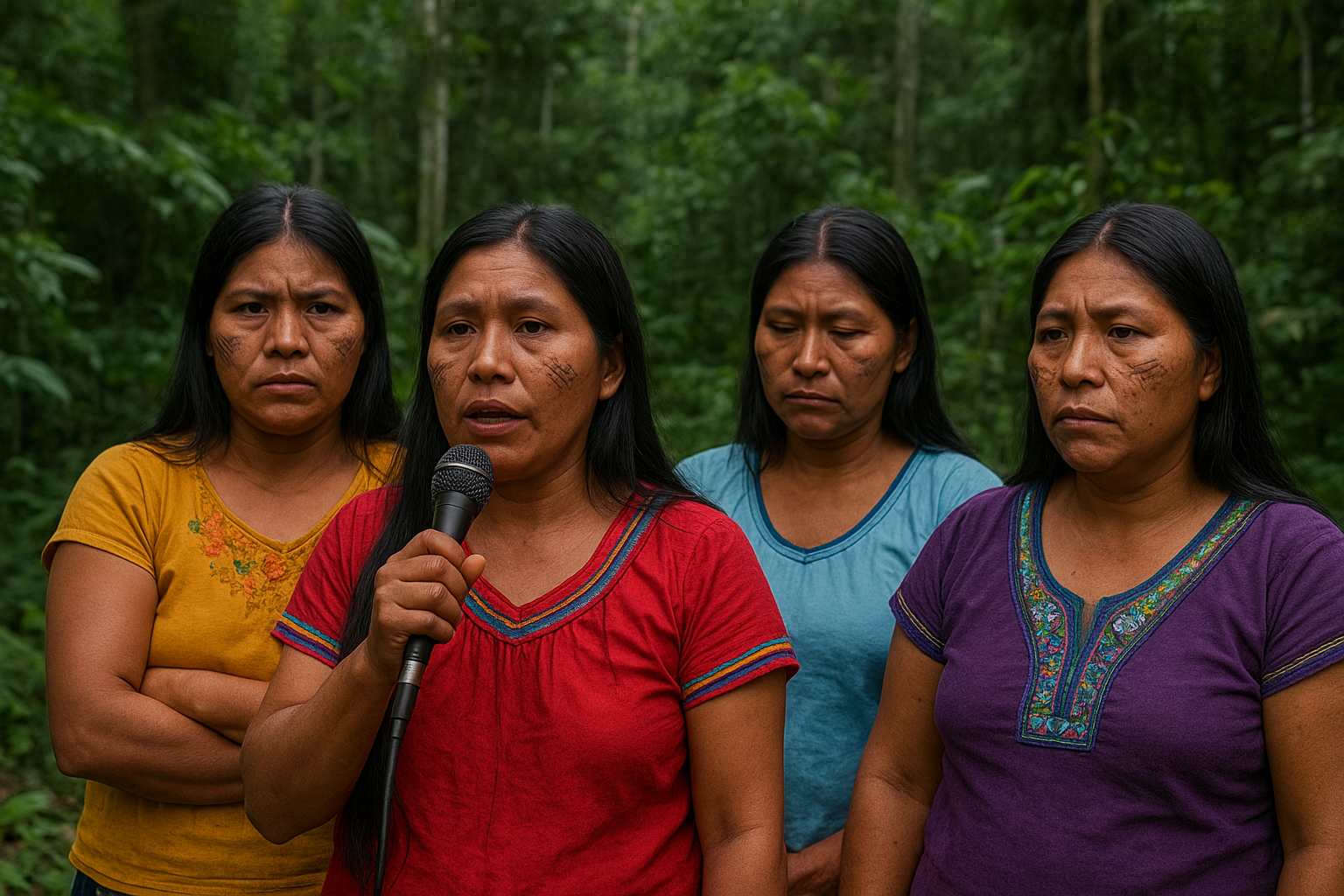Explore Issues
- Arts and Culture
- Decolonizing Thought
- Environmental Justice
- Health
- Languages and Education
- Science
- Social and Gender Justice
- Uncategorized
Filter by Country
-

Women of the Rainforest: Voices Against Violence
In the heart of the Ecuadorian Amazon, where the rainforest is our mother and refuge, indigenous women sustain life, memory, and resistance. They are the guardians of our territories, of traditional medicine, and of the word. That resistance, however, faces silent and brutal violence every day; a violence interwoven with patriarchy, structural discrimination, and neglect…
-

Women of the Rainforest: Voices Against Violence
In the heart of the Ecuadorian Amazon, where the rainforest is our mother and refuge, indigenous women sustain life, memory, and resistance. They are the guardians of our territories, of traditional medicine, and of the word. That resistance, however, faces silent and brutal violence every day; a violence interwoven with patriarchy, structural discrimination, and neglect…
-

Smallest Residents of Watershed Key Indicators of Overall Watershed Health
CAPTION: Mya Fisher, a Hoh tribal member in the Quileute Tribe’s Youth Opportunity Program, scans a tub for macroinvertebrates sampled from Bear Creek. Photo: D. Preston. SOURCE: Northwest Treaty Tribes. The 20 treaty Indian tribes in western Washington are leaders in efforts to protect and restore natural resources in the region. At the heart of…
-

Weaving Memories: Cultural identity and sustainable development in the Bolivian highlands of La Paz and Oruro
FROM THE EDITORS: Behind the magic of Andean weaving, there is science, a social commitment, cultural interaction, history, and community resilience. Based on historical documentation, scientists have found Andean weavings as old as 1400 BC that were woven at Acllahuasi (quechua for “House of the Chosen Ones”), Inca ceremonial centers where women were in charge…
-

Mapuche Songwriter Shares Her Art as a Tool for Native Resilience
Interview Carina Carriqueo, Mapuche singer from Argentina, by Awasqa, August 2019 Because there is something else which we do not consider and sometimes we forget, is that we are making history. Each one of us is making history, and behind us, on this path that we are marking, on this path, there are children, and…
-

Indigenous people literature / Translations of cultural experiences in writing
SOURCE: Astrolábio Magazine nº 21 year II set. 2017, English translation: Awasqa Indigenous literature is marked by a narrative tradition with strong traces of orality, amplified by representation systems through graphics, which constitute another narrative, which differs from the strict concept of the printed word. Indigenous graphics are stories and information narratives with their language…
-

Indigenous women and peasants unite for the largest women’s action in Brazil
SOURCE: MidiaNinja, translated from Portuguese by Awasqa. The Margaridas meeting was attended by 100,000 people in Brasilia. The first march of indigenous women joins the peasants to fight against social setbacks. To resist the current political scenario, indigenous women decided to unify movements. The first March of Indigenous Women will occur simultaneously with the March…
-

Can human rights be exercised in Native American communities?
Last June 24, 2019, the University of Arizona Rogers College of Law, Indigenous Peoples Law and Policy Program on behalf of the Water Protector Legal Collective, made public the report “Criminalization of Human Rights Defenders of Indigenous Peoples Resisting Extractive Industries in the United States” summarizing reports, complaints and denunciations filed with the Inter-American Commission…
-

Native Hawaiians Sue Governor, Fight Against Telescope on Sacred Lands
For four days over 1000 Native Hawaiians have been standing ground to block an access road to Mauna Kea, a mountain regarded as one of the most sacred places in Hawaii, to protest the construction of the Thirty Meter Telescope (TMT) on sacred land. “From time immemorial through the present, Native Hawaiians view, revere, care…
-
Privacy Policy
Para leer nuestra política de privacidad en español, ver abajo. Awasqa operates a website, found at www.awasqa.org; operates a Facebook, Twitter, and YouTube pages; delivers newsletters and other content via email; and makes the same or similar content available to mobile users. Our Privacy Policy applies when you use any of these Services. It describes…